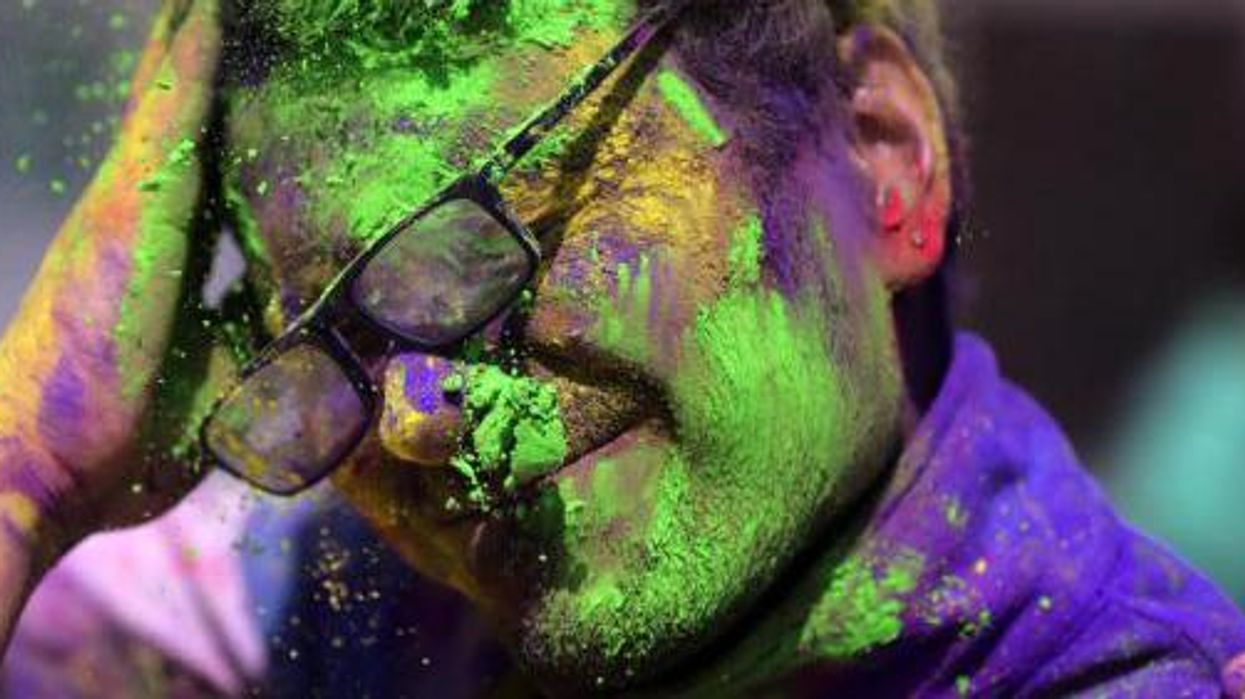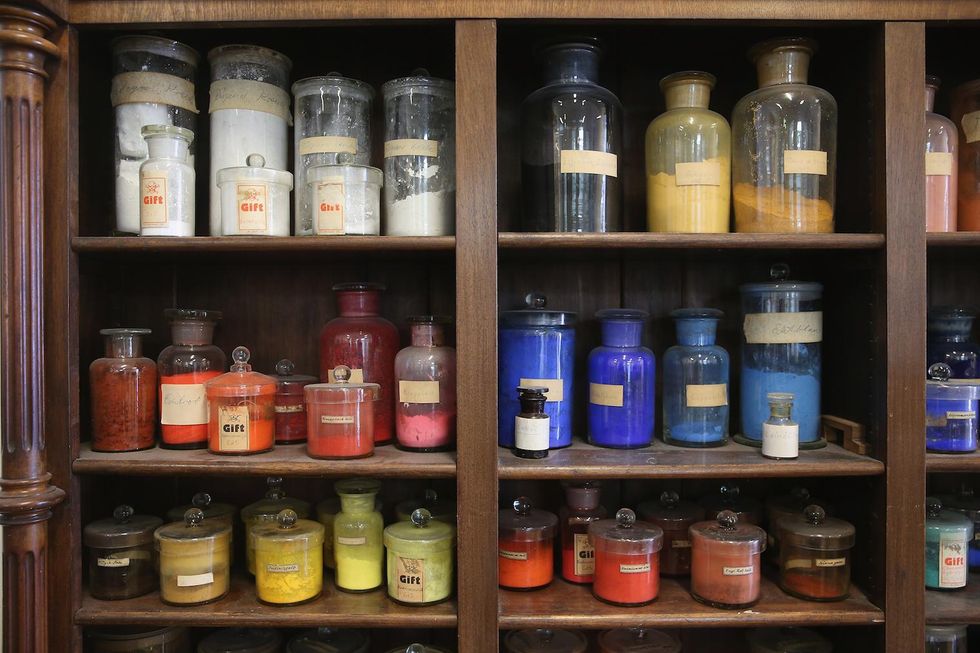
On Thursday, Holi begins.
It's the Hindu festival of colour which marks the arrival of spring and takes place over two days.
People now celebrate it all over the world, although it most is most prominent in India and Nepal.
As part of the Holi celebrations, people gather in public spaces and participate in Rangwali Holi, chasing each other around, throwing handfuls of coloured powders (gulal) at each other, while getting drenched in water.
In our times of plenty and mass-production, we can forget that once upon a time in Europe, some pigments used to be even more valuable than gold because of their scarcity.
Picture: Sean Gallup/Getty Images
As Co.Design points out, much of what we know about historical use of pigments comes from Harvard University, specifically Edward Forbes, a historian and director of the Fogg Art Museum from 1909 to 1944.
The extensive pigment collection that has grown there since the early 20th century is now used predominately for scientific analysis of pigments; useful for disproving fakes of historical paintings.
It also holds some of the rarest pigments the world has ever known, that old masters would pay large amounts of money for, given the costs of production.
Here's a selection, as told by Narayan Khandekar, director of the Straus Center for Conservation and Technical Studies at the Harvard Art Museums, to Co.Design:
Ultramarine Blue
The discovery of the synthetic variety occurred due to a prize offered by the French government.
The synthetic variety of the pigment was obtained by heating in a closed-fire clay furnace, a fine mixture of China clay, soda ash, coal or wood, sulfur, silica and charcoal.
It was many thousand times less expensive than the variety prepared from Lapis Lazuli (see below).
Annatto
Khandekar told Co.Design:
The lipstick plant—a small tree, Bixa orellana, native to Central and South America—produces annatto, a natural orange dye. Seeds from the plant are contained in a pod surrounded with a bright red pulp. Currently, annatto is used to color butter, cheese, and cosmetics.
Lapis Lazuli
The stone would be mined in Afghanistan and shipped to Europe.
Because it was a hard stone, it was difficult to separate the pigment from the other constituents, and would be purified by mixing it with wax and kneading it in a dilute lye bath.
Cennino Cennini's 14th-century recipe for ultramarine pigment can be found here.
Cochineal
Khandekar said:
This red dye comes from squashed beetles, and it's used in cosmetics and food.
Dragon's Blood
Dragon's Blood came from an East Indian shrub, Pterocarpus draco, the sap of which dried into a brownish-red gum resin.
It became known as Dragon's Blood, because Pliny, the Roman author, said it was made from the mixed blood of a dragon and an elephant after they battled (?!?!?).
Emerald Green
This dye was made from copper acetoarsenite and was developed in the early 19th Century in an attempt to improve Scheele's green.
The pigment was extracted from a boiled solution of white arsenic, water, acetic acid and vinegar, and was ground in linseed oil for application.
Mummy Brown
Khandekar told Co.Design:
People would harvest mummies from Egypt and then extract the brown resin material that was on the wrappings around the bodies and turn that into a pigment. It's a very bizarre kind of pigment, I've got to say, but it was very popular in the 18th and 19th centuries.
Brazilwood
The brazilwood dye comes from the Caesalpinia tree, the 'brazil' name predating the country.
When the brown powder of brazilwood is wet it turns more red and when steeped in a solution of lye it colour the liquid a deep red.
The wood was also used for violins, bows, and furniture.
More: These are the world's favourite colours
More: The internet is obsessed with the colours of this dress




















